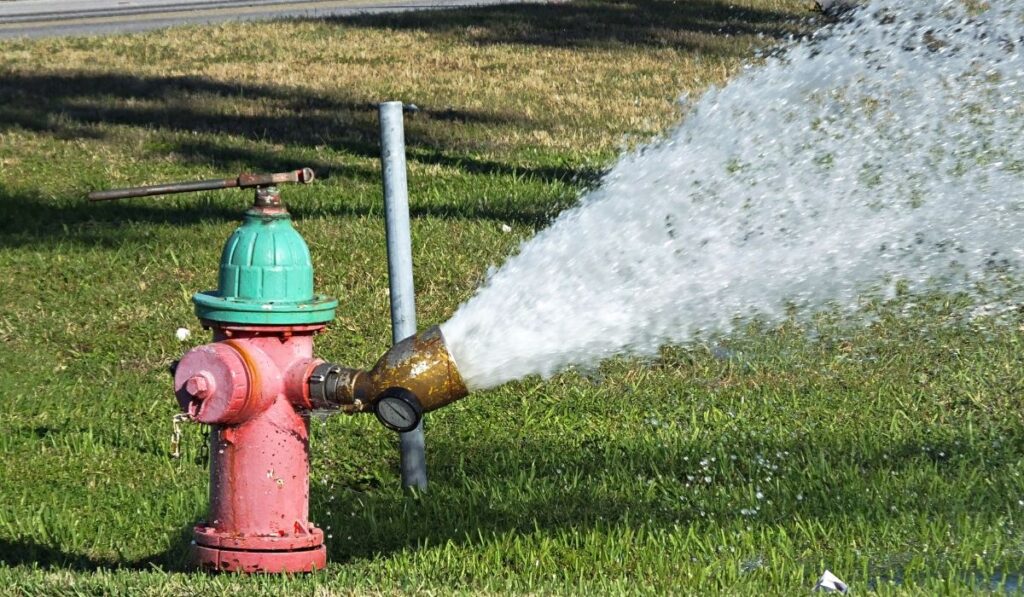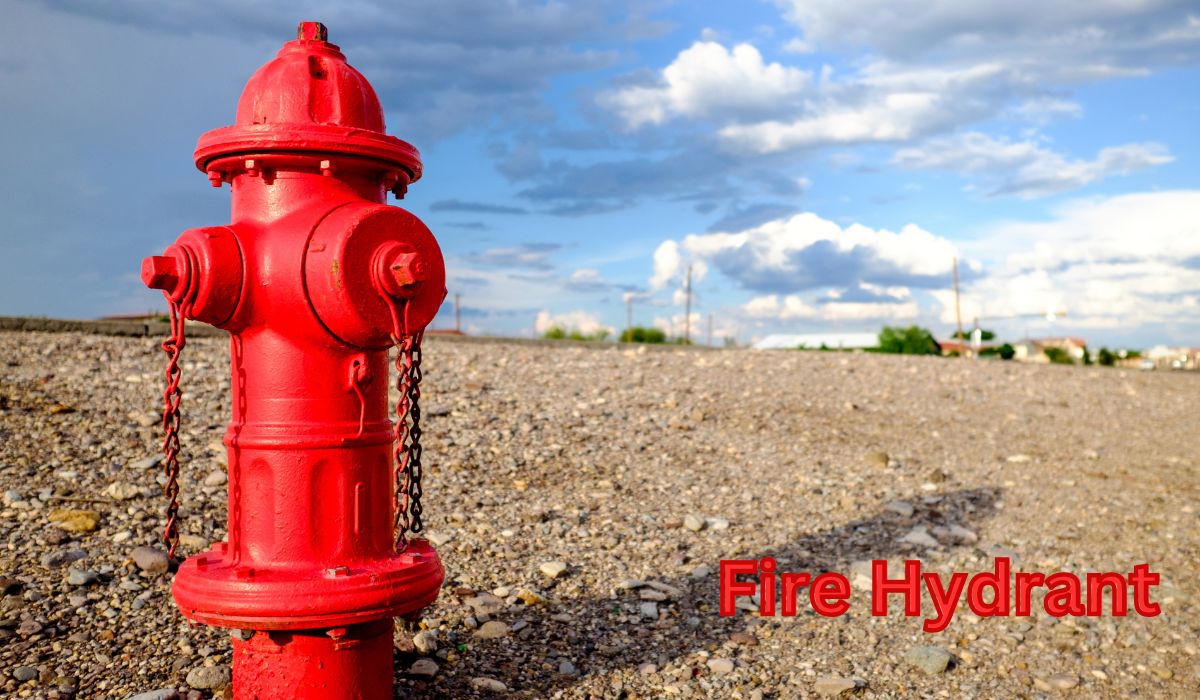A fire hydrant is a crucial component of urban firefighting infrastructure. It provides a readily available water source for firefighters.
Fire hydrants are strategically placed in urban areas to ensure quick access to water during emergencies. These devices connect to a city’s water supply, allowing firefighters to combat fires effectively. Regular maintenance and inspections are essential to ensure hydrants function properly.
They often feature a bright color for easy identification and may vary in design depending on local regulations. Understanding their locations and operations can significantly enhance public safety and emergency response. Investing in advanced hydrant systems can further improve firefighting efficiency and community safety, making them indispensable in urban planning and emergency preparedness.

Importance Of Fire Hydrants
Fire hydrants are crucial for urban safety. They ensure quick access to water during fires. Firefighters rely on them to control and extinguish fires. This helps save lives and properties.
Role In Firefighting
Fire hydrants provide an immediate water source for firefighters. They connect hoses to hydrants to get water for fire suppression. This rapid access is vital in emergency situations.
Hydrants are strategically placed for easy access. This positioning helps firefighters reach fires quickly. The faster they reach a fire, the less damage it causes.
Impact On Urban Safety
Fire hydrants improve urban safety by reducing fire risks. They ensure that water is always available in case of a fire. This readiness can prevent small fires from becoming large disasters.
Communities with well-maintained hydrants feel safer. People know that help is nearby if a fire starts. This sense of security is important for urban living.
| Aspect | Importance |
|---|---|
| Immediate Water Access | Essential for firefighting |
| Strategic Placement | Quick response to fires |
| Urban Safety | Reduces fire risks |
| Community Security | Enhances sense of safety |
Types Of Fire Hydrants
Fire hydrants are crucial for firefighting. They provide water quickly during emergencies. There are two main types: Dry Barrel Hydrants and Wet Barrel Hydrants. Each type has its unique features and uses.
Dry Barrel Hydrants
Dry Barrel Hydrants are used in cold climates. They prevent water from freezing inside. When the hydrant is not in use, the water stays below ground. This keeps the water from freezing.
Here are some key features of Dry Barrel Hydrants:
- Water stays below ground when not in use.
- Prevents freezing in cold weather.
- Easy to maintain.
- Common in regions with cold winters.
Wet Barrel Hydrants
Wet Barrel Hydrants are used in warm climates. Water remains in the hydrant at all times. This allows for quick access during emergencies. They are simpler than dry barrel hydrants.
Here are some key features of Wet Barrel Hydrants:
- Water stays in the hydrant.
- Quick access to water.
- Simple design.
- Used in warm regions.
| Type of Hydrant | Key Features | Best Used In |
|---|---|---|
| Dry Barrel Hydrant |
|
Cold climates |
| Wet Barrel Hydrant |
|
Warm climates |
Hydrant Maintenance
Proper hydrant maintenance is vital for ensuring public safety and efficient fire response. Regular upkeep helps prevent failures and ensures hydrants work during emergencies. This section covers key aspects of maintaining fire hydrants.
Regular Inspections
Regular inspections are crucial for maintaining the functionality of fire hydrants. Inspect hydrants at least twice a year to check for any issues. During inspections, look for:
- Leaks – Ensure no water leaks from the hydrant.
- Obstructions – Clear any debris around the hydrant.
- Accessibility – Ensure the hydrant is easy to access.
- Pressure – Test the water pressure to ensure it meets standards.
Maintaining a detailed log of each inspection helps track the hydrant’s condition. This record-keeping supports proactive maintenance and timely repairs.
Common Repairs
Despite regular inspections, hydrants may require repairs. Some common repairs include:
| Issue | Description |
|---|---|
| Valve Replacement | Replace faulty valves to ensure proper water flow. |
| Gasket Replacement | Replace worn gaskets to prevent leaks. |
| Painting | Repaint hydrants to prevent rust and increase visibility. |
| Lubrication | Lubricate moving parts to ensure smooth operation. |
Performing these repairs promptly keeps hydrants in working order. Addressing issues early prevents larger problems and ensures the hydrant’s reliability.

Credit: en.wikipedia.org
Proper Usage
Proper usage of a fire hydrant ensures safety and efficiency. Understanding the correct methods helps maintain a reliable water supply during emergencies. This section covers essential techniques for using fire hydrants effectively.
Connection Techniques
Connecting to a fire hydrant requires precision and care. Follow these steps:
- Inspect the Hydrant: Check for damage and ensure it’s accessible.
- Open the Cap: Use a hydrant wrench to remove the cap.
- Attach the Hose: Secure the hose tightly to prevent leaks.
- Open the Valve: Turn the hydrant valve slowly to avoid water hammer.
Proper connection minimizes water loss and ensures maximum flow.
Water Pressure Management
Managing water pressure is crucial for effective firefighting. Follow these guidelines:
- Monitor the Gauge: Use a pressure gauge to check water pressure.
- Adjust as Needed: Use valves to control pressure levels.
- Avoid Sudden Changes: Gradually open and close valves to prevent surges.
Maintaining appropriate pressure ensures sufficient water supply for fire suppression.
| Step | Description |
|---|---|
| Inspect | Check the hydrant for damage and accessibility. |
| Open Cap | Remove the cap using a hydrant wrench. |
| Attach Hose | Secure the hose tightly to the hydrant. |
| Open Valve | Turn the valve slowly to avoid water hammer. |
| Monitor Gauge | Check the water pressure with a gauge. |
| Adjust Pressure | Use valves to control water pressure levels. |
By following these steps and guidelines, fire hydrants can be used safely and effectively, ensuring a reliable water supply during emergencies.
Accessibility Issues
Fire hydrants are crucial for firefighting. Accessibility issues can delay emergency response. Ensuring hydrants are accessible is vital for public safety.
Obstructions
Obstructions around fire hydrants can block access. Common obstructions include:
- Parked cars
- Trash bins
- Overgrown plants
- Construction materials
Parked cars often block fire hydrants, slowing down firefighters. It’s important to keep a clear path around hydrants.
Clearance Requirements
Fire hydrants need a clear space to work properly. Here are some clearance requirements:
| Obstacle | Minimum Clearance |
|---|---|
| Cars | 3 feet |
| Trash bins | 3 feet |
| Plants | 3 feet |
| Construction | 3 feet |
Maintaining these clearances is crucial for quick access during emergencies.

Community Awareness
Fire hydrants play a crucial role in public safety. They ensure quick access to water during emergencies. Community awareness about fire hydrants is essential. It helps in maintaining their functionality and availability.
Public Education
Public education on fire hydrants is vital. Everyone should understand their importance. Educating the community helps prevent misuse and ensures proper maintenance.
- Schools can include lessons on fire safety.
- Local authorities can organize awareness campaigns.
- Provide informational brochures and flyers.
Knowing how to use and protect fire hydrants can save lives. It is important to keep hydrants clear of obstructions. This ensures firefighters can access them quickly during emergencies.
Reporting Damaged Hydrants
Community members should report damaged hydrants immediately. A damaged hydrant can delay emergency response. Reporting helps in quick repairs and ensures readiness.
| Steps to Report | Description |
|---|---|
| Identify the hydrant | Note the location and hydrant number. |
| Contact local authorities | Call the local fire department or water service. |
| Provide details | Describe the damage and its impact. |
Timely reporting helps keep the community safe. Everyone should take responsibility for reporting issues.
Emergency Preparedness
Emergency preparedness is crucial for any community. Fire hydrants play a key role in it. They are the first line of defense during a fire. Proper planning ensures safety and efficiency.
Disaster Planning
Effective disaster planning involves multiple steps. First, identify potential hazards. This includes areas prone to fires. Next, map out all fire hydrants in the area. Use a clear and updated map. Ensure everyone knows the locations.
Regular maintenance is also vital. Inspect fire hydrants frequently. Check for leaks and damages. Replace any faulty parts. This keeps the hydrants in working condition. Create an emergency response plan. Include evacuation routes and meeting points.
| Step | Action |
|---|---|
| 1 | Identify hazards |
| 2 | Map fire hydrants |
| 3 | Inspect and maintain hydrants |
| 4 | Create response plan |
Coordination With Fire Departments
Coordination with fire departments is essential. Share your disaster plan with them. Ensure they have access to your hydrant map. This helps them respond quickly during an emergency.
Conduct regular drills with fire departments. Practice using the fire hydrants. This ensures everyone knows their roles. Drills help identify any issues in the plan. Address these issues promptly.
- Share disaster plan
- Provide hydrant map
- Conduct regular drills
- Identify and address issues
Effective coordination saves lives and property. It makes your community safer. Always stay prepared and stay safe.
Innovations In Hydrant Technology
Fire hydrants have greatly evolved over the years. Modern advancements bring new innovations. These innovations help in improving safety and efficiency. In this section, we explore two key advancements.
Smart Hydrants
Smart hydrants are the future of firefighting. They come equipped with sensors. These sensors provide real-time data. Data includes water pressure and flow rates. Smart hydrants also alert authorities to leaks. This helps in quick repairs and water conservation.
- Real-time Data: Sensors provide live updates.
- Leak Detection: Alerts for immediate action.
- Water Conservation: Prevents unnecessary water loss.
Advanced Materials
Advanced materials make hydrants more durable. They withstand extreme weather conditions. These materials also resist corrosion. This ensures a longer lifespan for the hydrant.
| Material | Benefits |
|---|---|
| Stainless Steel | Corrosion-resistant and durable. |
| Composite Materials | Lightweight and strong. |
Frequently Asked Questions
What Is A Fire Hydrant Used For?
A fire hydrant provides firefighters with easy access to water supply to extinguish fires quickly.
What Is The Difference Between A Fire Hydrant And A Fire Hose?
A fire hydrant provides a water supply for firefighting. A fire hose delivers water from the hydrant to the fire.
How Do I Find A Fire Hydrant Near Me?
Use Google Maps to search for nearby fire hydrants. Enter your location and type “fire hydrant” in the search bar.
What Are The Three Types Of Fire Hydrants?
The three types of fire hydrants are wet barrel, dry barrel, and yard hydrants. Wet barrel hydrants contain water in the barrel. Dry barrel hydrants keep water below ground to prevent freezing. Yard hydrants are used in private, rural, or industrial areas.
Conclusion
Fire hydrants play a crucial role in ensuring public safety. They provide quick access to water during emergencies. Proper maintenance and accessibility are vital for their effectiveness. Communities should remain vigilant about hydrant upkeep. By doing so, we can safeguard lives and property.
Remember, a well-maintained fire hydrant can make all the difference.

I’m Abdus Sobur, a highly skilled and professional Fire Safety Officer with a passion for safeguarding lives and property. Over the course of my career, I’ve conducted numerous successful fire safety audits, earning a reputation for excellence in ensuring public safety.
In addition to my role as a Fire Safety Officer, I’m also dedicated to raising awareness about the importance of fire safety. Through my blog, I share insights into the functions of different fire safety equipment, aiming to empower individuals with the knowledge they need to protect themselves and their communities.
I’m driven by a deep commitment to promoting fire safety awareness and preventing fire-related incidents.

